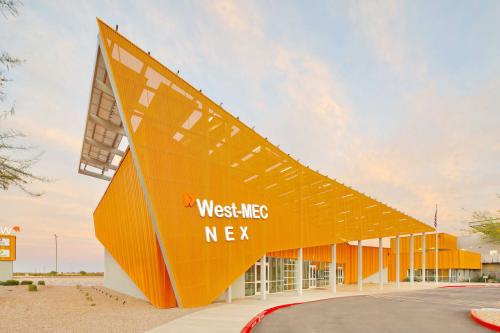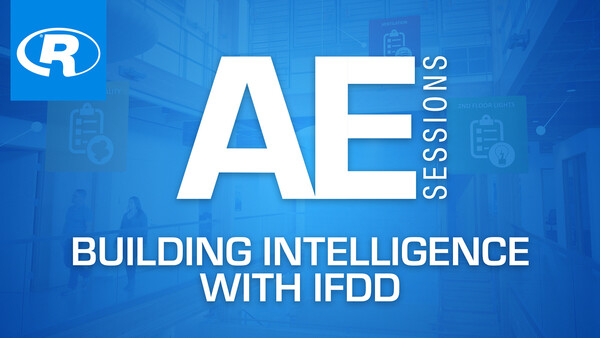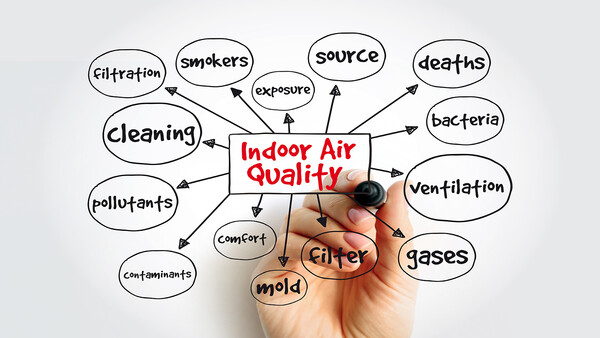How building automation impacts health, efficiency, and indoor air quality in hospitals
How does building automation ensure hospitals are safe, secure, comfortable environments for everyone?





Participants:
Doug Everhart, PE, LEED AP, K–12 education practice director at Henderson Engineers, Lenexa, Kansas
Keith Hammelman, PE, principal at CannonDesign, Chicago
Brian A. Hummel, PE, LEED AP BD+C, mechanical engineer and senior associate at DLR Group, Phoenix
Richard Sparozic, PE, mechanical engineer at Kohler Ronan, Danbury, Connecticut
Casimir Zalewski, PE, LEED AP, CPD, principal at Stantec, Berkley, Michigan

Doug Everhart: In a recent project with Olathe Public Schools in Kansas, we helped the district maximize its investment in the facility with a building monitoring system, producing live reports on the facility’s electricity, gas, and water use. This gave the district’s facilities team better, more automated control of the building’s systems in addition to more accurate and timely performance data.
Casimir Zalewski: Small and large unitary systems can provide BACnet interfaces that provide K–12 school facilities with higher levels of integration and remote diagnostic capabilities to help them understand how the systems respond to changing conditions throughout the school day and seasons. Additionally, lighting and lighting control systems provide daylighting, dimming, and greater levels of control at a reduced price point.
Keith Hammelman: The automation of lighting control systems has seen an increased level of automation. This includes the incorporation of complex lighting control systems, daylighting, and integration of the lighting control systems into HVAC system operation to allow for increased operational efficiency of the facility. This increased level of automation has also allowed for increased customization of educational environments for a variety of modes of operation.
We have also seen an increase in the automation of security systems and incorporation of keyless door and hardware systems. By providing a keyless door and hardware system, a school district can provide additional safety in case of the need to lock down a facility.
Casimir Zalewski: The use of filter monitoring has increased. As the level of filtration has increased along with the cost of replacement filters, it has become more important to monitor pre- and final filters separately to extend the life of MERV 13 or 14 filters. In equipment where MERV 13 filters have been retrofitted, a closer monitoring of pressure drop has become more critical to ensure HVAC equipment provides proper airflow at all times.
Keith Hammelman: We have been using sensors to measure the level of particulate matter, CO2, and volatile organic compounds in buildings to ensure spaces provide ventilation air to the spaces. The quantity of ventilation air at outside air intakes has also been measured to provide additional validation of the air being delivered.
Doug Everhart: The use of building monitoring systems, while a higher cost solution, provides another facet where districts can set themselves up for success to achieve healthier buildings, whether that be for [disease mitigation] requirements or for typical use of the building. Many districts already have building monitoring systems in place, and it really allows facility managers to keep better tabs on how their systems are performing in multiple buildings when it comes to zone temperature, humidity levels, exhaust fan status, etc.
Richard Sparozic: The firm has been asked on several projects to implement many air-quality-improving features for the HVAC system. In an effort to ensure these air-quality-improvement measures are operational, we have specified items such as air filter differential pressure sensors and current sensors. Differential pressure sensors for air filters can allow the building owner to monitor filter loading and notify facilities staff when to replace an air filter. Current sensors have been used to monitor equipment status and ensure it is operational.
Brian A. Hummel: Having a building automation system greatly increases the owner/school district’s ability to control the HVAC system. By having a control system, the start-up times and building air flush times can be easily increased to improve indoor air quality. Space occupancy monitoring can ensure spaces are set to occupied modes when people are present in spaces to ensure equipment is operating and outside air is being brought into the space.
Many of our newer designs use demand-controlled ventilation/CO2 monitoring to modulate outside air to more closely match space occupancy. We are listing control operator options to easily override building start-up times for greater air flushing and functions like demand-controlled ventilation/CO2 sensing for periods of time or in zones like classrooms to ensure the code-required outside air quantity is provided at all occupied times, increasing air quality. This has some energy use impacts but increases indoor air quality. (Owners must balance risks and health concerns.)

Casimir Zalewski: Adding smart technology has resulted in additional controls development and coordination. More smart technology can add load to the building automation system, and it’s important to understand the interface between the two. Does the equipment speak BACnet? Or are higher levels of integration or additional gateway devices required to ensure proper operation and reporting? In any event, it falls on the controls engineer to make sure the system is designed and specified correctly to maximize the investment in smart technology.
Doug Everhart: Every aspect of systems we design now have some form of synergy with the low-voltage world. For example, as the need for system responsiveness to fluctuating occupancy in classrooms continues (as learned during the pandemic), system integration becomes extremely valuable. Occupancy sensing and space scheduling/programming tied to lighting system controls and HVAC direct digital controls allows mechanical and lighting systems to be set back or scheduled off for optimum energy savings. As room-based smart devices continue to learn user schedules and class patterns, an even further fine tuning of systems operations can be realized.
Brian A. Hummel: All our projects are constructed in BIM modeling software (Autodesk Revit) in conjunction with architectural, structural, mechanical, and plumbing systems. This allows all team members to see the building three-dimensionally as we build the BIM model. On many projects the BIM model is used to perform clash detection reports using software such as Navisworks to list the clashes. The team can then filter the clashes and correct potentially costly clashes in construction.
Doug Everhart: BIM/Revit and other industry design and construction tools are driving our industry forward. Henderson is not only fully Revit and BIM360 capable, but also we partner with Autodesk and other industry vendors to provide continual improvement and evolution of these design tools. We employ a staff of software designers that helps our firm fully use these tools in the most efficient and beneficial ways possible. As technology expands, cloud-based, real-time modeling will be an integral part of the design, planning, procurement, and construction processes, saving time and money and minimizing the need for design changes later on.
Richard Sparozic: Kohler Ronan has been using Revit on the majority of projects recently designed for K–12 schools. It is a great design tool that can reduce conflicts during design and result in more streamline construction. Many construction managers have also been brought on board during design and have assisted with clash detection using alternative software such as Navisworks.
Doug Everhart: Our K–12 clients are starting to ask questions about IoT in schools. I feel like we are right on the cusp of this solution becoming more prevalent in these types of facilities. We should expect an integration of all building systems and IoT-based technology that allows learning environments to be monitored and precisely tuned based on user trends and resulting student performance. Since both user-level content within the classroom and building systems now directly interface with technology, this creates tremendous potential for the synergy of systems to be responsive to each individual in the learning environment for increased performance.
Keith Hammelman: The simple answer is yes. On most of our projects, the integration of multiple systems and how this integration will work has to be planned and provided. We are seeing a push on lighting system design with Power over Ethernet as an approach that requires many more trades to coordinate and integration specifications to be included in the project approach.
Doug Everhart: In our project with Olathe Public Schools in Kansas, the district not only uses the real-time building monitoring data for the facilities team but also to make the information available to students at the school. The real-time analytics from the monitoring system are integrated into the curriculum of the school’s Green Technology Academy, a program that equips the students with the necessary tools and opportunity to learn about the importance of energy efficient technology. Through this application, the students analyze energy consumption data and are able to have a hand in their everyday environment. Our Integrating Building Monitoring in the K–12 Environment video explains how the students use the software’s data in their curriculum.
Do you design building automation systems? Our website offers free tools and utilities for building design and automation consultants. Make your life easier, save time, and save effort by registering for a Consultant account on our Reliable Controls Support Center.
This content was previously published by Consulting Specifying Engineer

How does building automation ensure hospitals are safe, secure, comfortable environments for everyone?

Learn when and why MS/TP communication is helpful in building automation systems.

From the moment you park your car at a hockey arena, your comfort and safety are enhanced through a building automation system. Here’s how.

Building automation systems can make buildings truly intelligent, reducing their carbon footprint and saving money. Learn how.

Ever wonder how a building automation system ensures safety and accuracy in lab work?

Museums—and their building automation systems—play an important role in preserving the preserved. Learn how.

When you see a doctor or personal trainer, you benefit from their knowledge and experience. In the same way, a building automation system should provide all the tools you need to maintain your buildings in optimal health.

What are you doing to mitigate the transmission of viruses indoors? Learn what measures you can take and how your smart building provides more information and control for IAQ concerns.